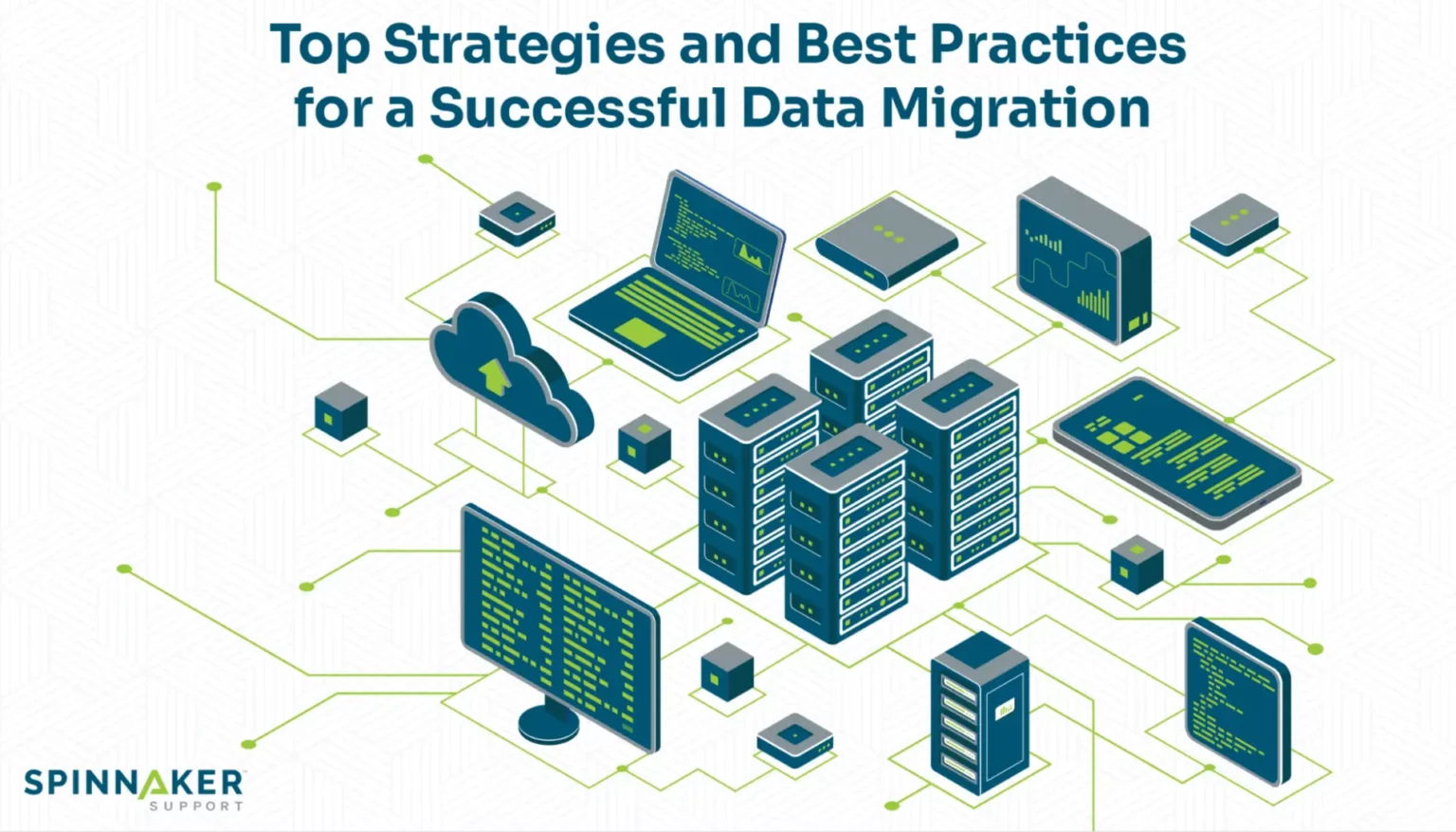
Companies must migrate their data when they implement new technologies and upgrade their infrastructure. However, about 60% of infrastructure and operations (I&O) leaders will face over-budget migration costs, due to complications such as dependency bottlenecks, rushed workload assessments, and choosing a migration partner without the right expertise.
The process of migrating data is intricate and requires careful preparation and execution, but by following key industry best practices you can migrate your data with as little error as possible.
In this article, we’ll take you through data migration strategies, challenges, and best practices. We’ll also show you how to leverage third-party support for a smooth data migration experience.
What is data migration?
Data migration refers to transferring data from your current storage environment to a new one. It makes use of ETL processes, which consist of: extracting data from its source, transforming it as needed (such as by transposing, aggregating, and validating data), and loading data into its intended source.
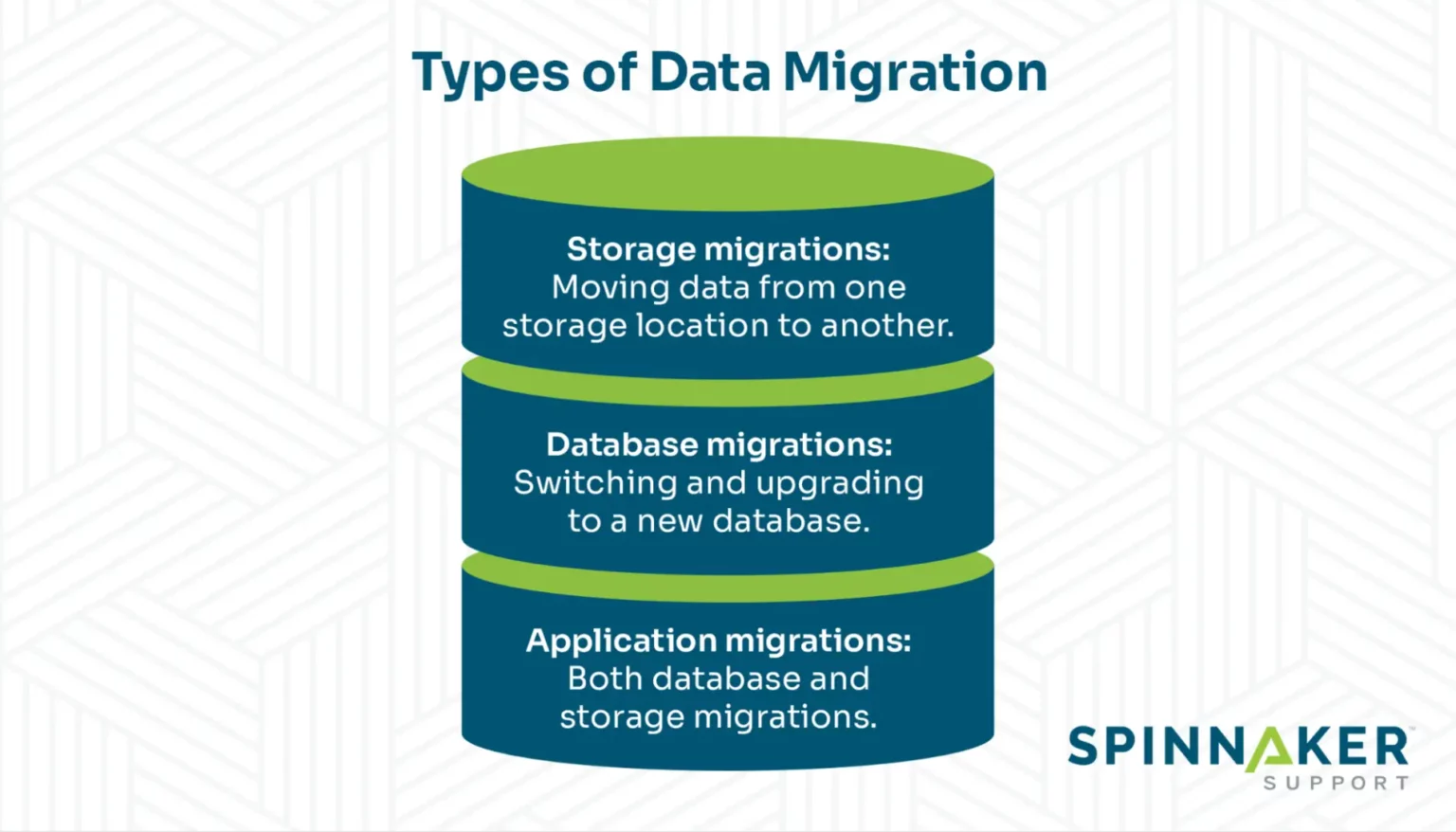
Businesses may migrate their data to enhance operational performance and competitiveness. A unified data source can reduce the cost of having multiple storage locations and help create a more organized system that can be leveraged for better reporting on business insights.
Possible types of data migrations include:
- Database migrations: This involves switching and upgrading to a new database. For example, migrating from Oracle to SAP databases.
- Storage migrations: This involves moving data from one storage location to another. For example, migrating from an on-premises database to a cloud storage solution.
- Application migrations: This involves moving an application from one environment to another, such as rehosting an on-prem app in the cloud. This may require database and storage migrations to a new system.
Whichever type of migration you face, you’ll want a clear step-by-step data migration plan to ensure a successful project.
Data migration strategies
Whether moving to a new system or just looking for a more secure storage location, you’ll need to select the migration approach that suits your business needs.
There are two primary strategies for data migration: Big Bang and Trickle Data Migration.
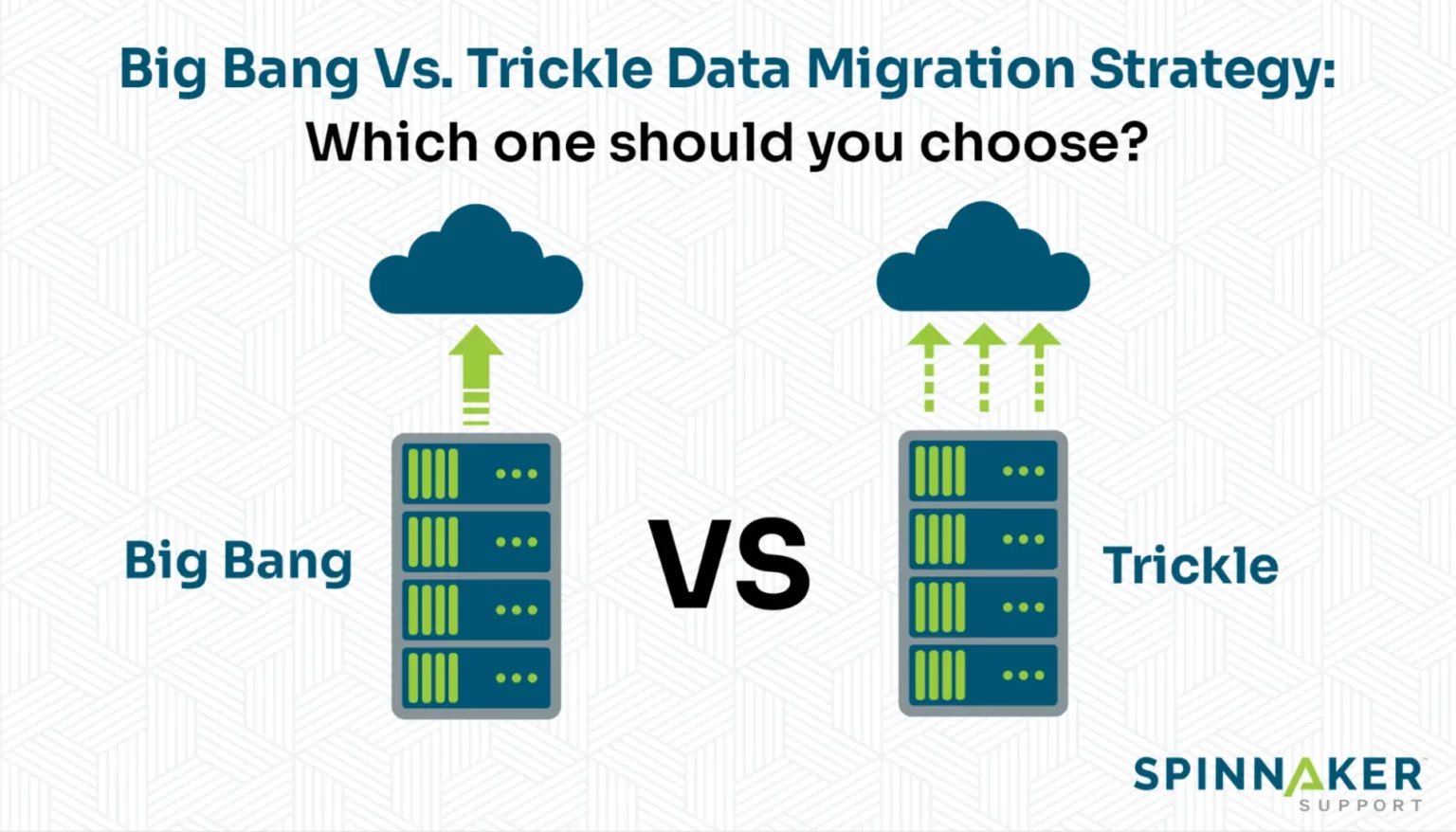
Big Bang strategy
When employing this strategy, your IT team will migrate all data and workloads within a short time. The source databases remain offline during migration as your IT team completes migration tasks. The Big Bang approach is the best strategy for companies looking for faster migration processes.
Big Bang migrations can suit smaller companies working with less data and those with limited time to complete data migrations. A big bang approach does involve downtime, but with an efficient plan, you can work to complete your migration as quickly as possible, aiming to minimize interruptions to the customers.
The Big Bang approach might not be the best choice for businesses that can’t afford lengthy downtimes. Additionally, the Big Bang strategy might not work for you if you need to check for compliance and data security requirements constantly.
Trickle data migration strategy
With this strategy, data migration is done in phases as the source system runs in parallel with the target database. The IT team migrates workloads and data in small chunks over an extended period.
Trickle migration takes more time than the Big Bang and is a more controlled strategy with scheduled migration phases designed to meet business-specific requirements. During the migration process, the source system isn’t taken offline, thus removing the need to schedule for downtimes and disruptions.
Choosing the trickle approach means less stress for your IT team as the migration process is phased, and data is migrated in bits. However, businesses with tight migration schedules may not find the trickle strategy optimal.
Which should I choose?
Big Bang and trickle strategies both have their pros and cons — neither is inherently better than the other — so your choice will depend on your organization’s unique circumstances. For help mapping out your ideal plan, consider consulting with the data migration experts at Spinnaker Support.
Data migration challenges
Even with solid migration plans and strategies, it’s inevitable to run into problems during the data migration process. Here are some challenges common to migration projects:
Inaccurate data
Legacy data often needs transformation and cleaning before migrating it. You don’t want your brand-new storage solution to end up full of inaccurate or redundant information. To counter this challenge, you need to conduct a proper data assessment pre-migration to ensure data accuracy, and you need to verify that your ETL process cleans and loads the data as intended.
Data loss
Errors in the migration process can ruin existing, accurate, and organized data. For example, data can be lost by inadvertent deletion or technical errors that occur when running a migration without properly analyzing if the current system requirements match those of the new system.
Budget and deadline overrun
Migration can be a complex task. If you lack a qualified team and an efficient plan, it’s easy to miss project deadlines and exceed budgets. Organizations that lack in-house expertise can save time, money, and headaches by going with an experienced third-party support provider.
Best practices for successful data migration
Following these industry best practices can help you avoid pitfalls and ensure a successful data migration.
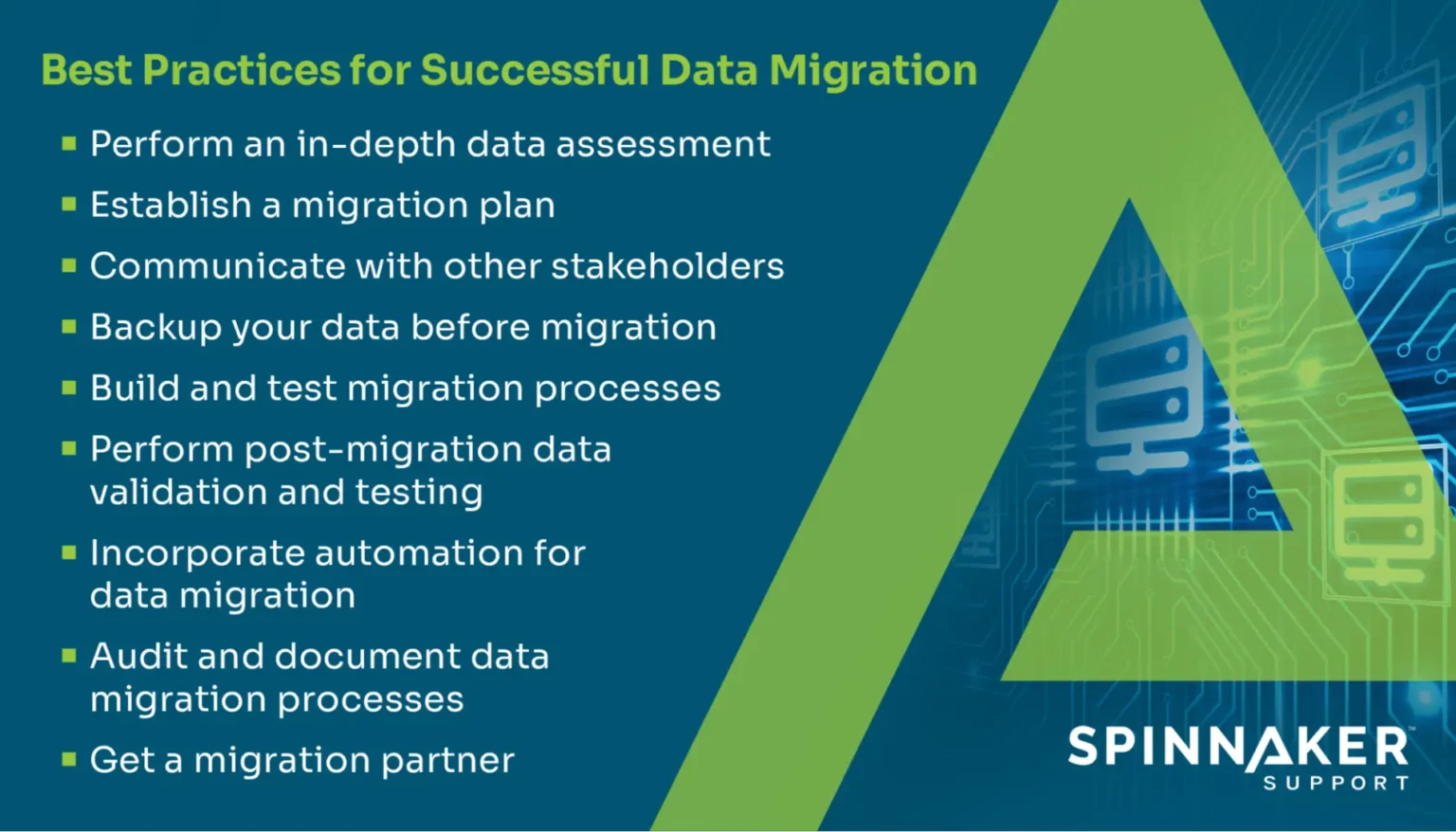
Perform an in-depth data assessment
Data assessments are a crucial step in your migration journey. Your migration team needs to audit all the data to determine data processing requirements. Proper pre-assessment helps you develop a clear picture of the entire data migration process.
It also lets you understand the quality of your current data so you can determine how to transform it before any migrations are done.
Establish a migration plan
You need to determine the project scope, including target data, migration budget, migration tools, and migration strategies. You also need to select a migration partner to help you meet regulations governing legacy data and data migration.
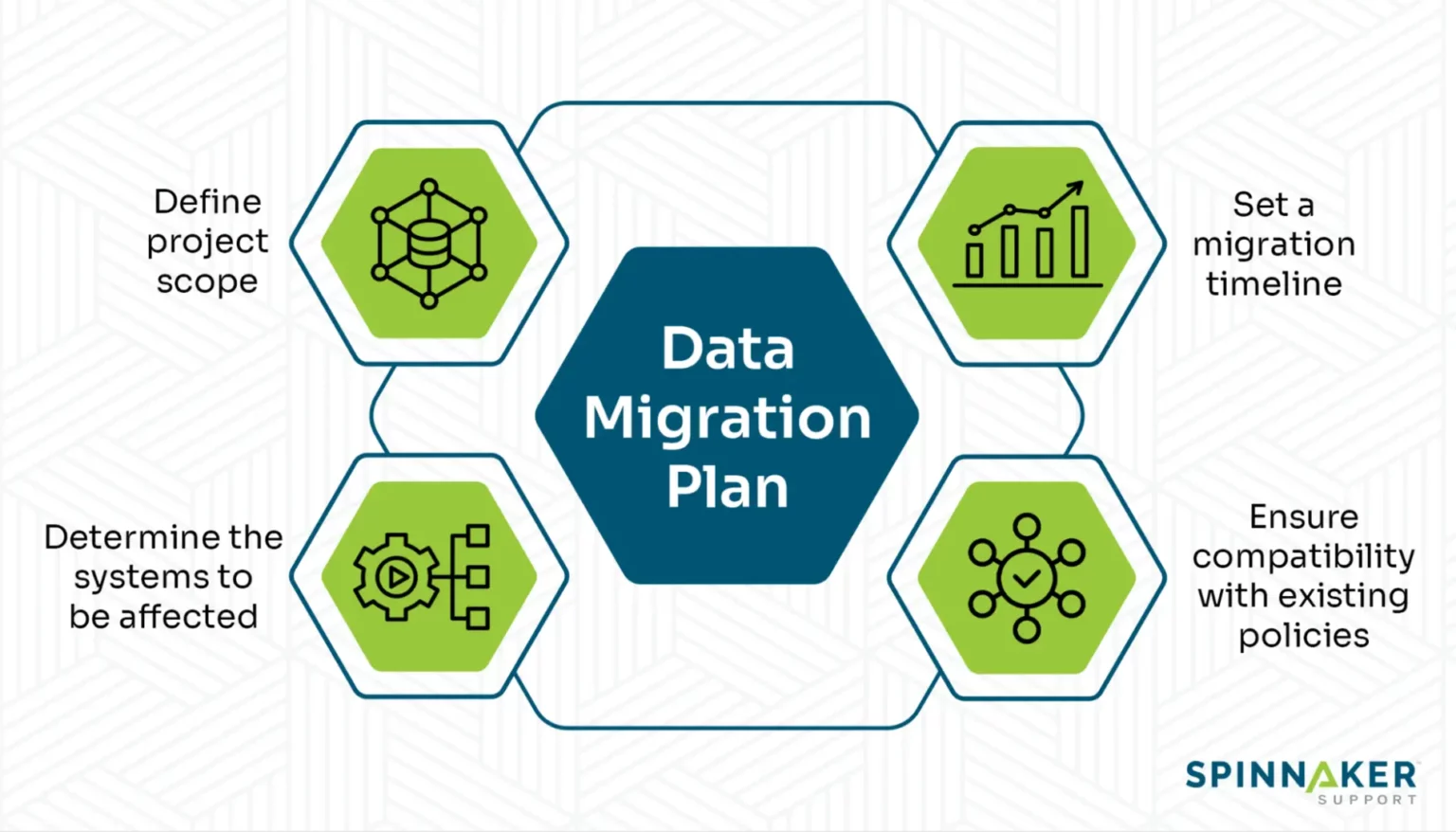
Additionally, you need to establish a migration timeline with realistic dates to avoid costly delays and budget overruns. Your migration plan should also help you identify the systems affected by the migration.
Also, ensure your data migration plans are compatible with existing policies, such as:
- Regulatory and compliance concerns
- Data handling requirements, e.g., encryption and chain-of-custody protection
- Alignment with your company’s overall data management strategies
Communicate with other stakeholders
When planning and initiating data migration processes, you need to inform all the employees within the organization how the migration will affect daily business operations. Employees from different departments will help your migration team understand the datasets housed in different departments.
Maintaining open lines of communication will also help you gather feedback post-migration to identify if all features are working as expected.
Backup your data before migration
Data loss is one of the biggest risks a company faces during data migration. Increased data use across organizations has driven the information archiving market to nearly $8 billion in 2023. As such, more companies are realizing the benefits of data backups and archiving during migration.
Before performing any migration, your IT team should have a backup plan for all business data, regardless of whether it is outdated or inaccurate. One rule of thumb is that source data shouldn’t be modified as you perform migrations.
You can back up the data on a secure, separate system. Data backups will help your migration team revert in case of data loss or errors during migration.
Build and test migration processes
Migrating your data involves designing your entire process and validating the hardware and software requirements. When building the migration processes, your migration team can either
- Recreate the existing schema and adapt it to your new system or
- Automate most of the process using a data integration tool.
After designing and building your data migration process, you need to test it in a sandbox environment to ensure it functions as expected. As you design, plan, and migrate your data, you should continuously test the data and processes to ensure you meet the expected results.
Perform post-migration data validation and testing
Once all the data has been migrated, the next best step is to perform data validation. Your migration team should check that the data was transformed correctly and works as expected.
Your migration team can run the new system parallel to the old one to identify possible errors or data loss. As you validate your data, you should generate a migration report that will denote the migration status, existing errors, and possible workarounds for data errors.
Also, you should continuously test and track your target systems post-migration for errors. Data migration may generate new challenges, as we mentioned above. Through regular testing and data validation, you can identify migration errors and fix them before they cause critical business disruptions.
Incorporate automation for data migration
As with any complex project, a data migration journey offers plenty of opportunities for unintended missteps along the way. But one way of reducing the risk of human error is through automation. Your migration team can choose to automate processes like data cleaning and transformation.
You can set automated retention policies to process legacy data before migration. Additionally, you can set automated procedures to handle data drift and set quarantine rules to help migrate sensitive data.
Audit and document data migration processes
You need to audit and document your migration process for compliance and future reference. Auditing helps identify shortcomings your migration team can improve on during the next migration.
Besides, having proper documentation of your migration process will help prove that you followed data protection regulations.
Get a migration partner
Data migration can be a daunting project, but choosing the right migration partner can help you succeed, by coming up with an efficient, cost-effective plan that ensures data integrity. A migration partner can also help you navigate data protection regulations and ensure compliance.
Whether you lack in-house personnel or want to augment your existing team, you’ll want to consider bringing in the necessary expertise to help migrate your data with minimal errors. You can pick a third-party support provider like Spinnaker Support, with engineers who have over twenty years of experience.
Leveraging third-party support during data migration
Experienced third-party support experts can help with every aspect of your migration journey, from creating a migration plan customized to your unique business needs, to implementing the right migration tools, to post-migration support of your system once it’s up and running.
Are you worried about some unique hurdle in your migration? Perhaps you need guidance on the right ETL process to migrate legacy data into newer formats, or you’re in an industry that makes it onerous to continually meet compliance requirements on an ongoing basis throughout the migration. Your in-house teams may not have encountered these circumstances before, but Spinnaker’s support engineers are well-versed in hurdles like these and stand ready to help. Spinnaker can help solve compatibility issues and reduce maintenance costs on legacy equipment and multiple data storage systems.
For example, the Health Insurance Company (HIC) maintained a large Oracle database, but they wanted to replace their Oracle environment with a single, proprietary healthcare industry-specific system with reporting functionality.
Since HIC had little Oracle expertise, they hired a local managed service firm. However, the firm didn’t monitor or back up their database, resulting in configuration problems.
By switching to Spinnaker Support, HIC saved 59% on support fees and got better support services. They could also stay on Oracle Technology until they could move reporting capabilities to their new SaaS claim system. The savings supported several regulatory projects in HIC’s pipeline.
You’ll reap additional benefits, too, by enlisting third-party support. For example, you can save on costs by doing away with expensive vendor support options. Spinnaker Support customers save an average of 62% – 67% on their support fees, and you’ll get better and faster service, thanks to a dedicated team that knows your system and your business.
Conclusion
Digital transformation efforts drive many businesses to upgrade to modern systems. As such, IT teams will need to transfer their legacy data to gain the benefits of modern systems. If you want to succeed in your efforts, you must follow data migration best practices to avoid pitfalls like data loss and corruption. The most effective, cost-efficient solution is to collaborate with a trusted migration partner like Spinnaker Support.
Spinnaker Support offers cost savings, helps businesses adhere to data privacy regulations, and provides access to highly skilled engineers. You can get started with third-party support today by contacting one of our support experts.


